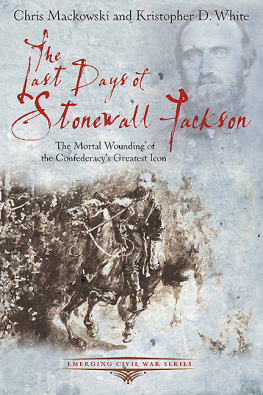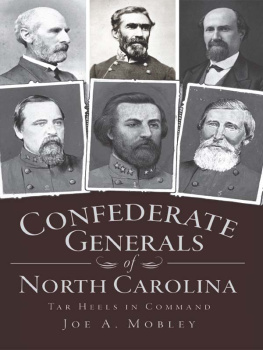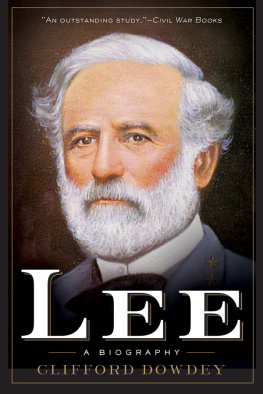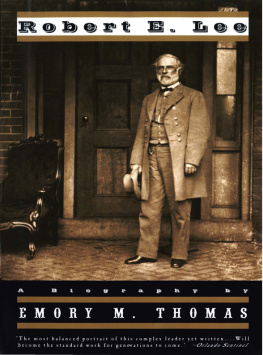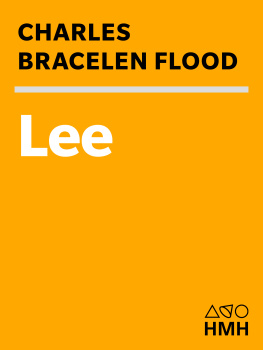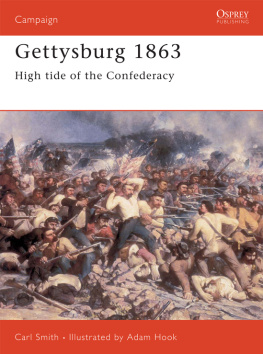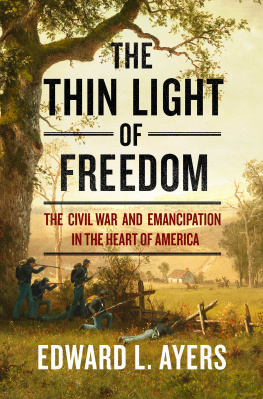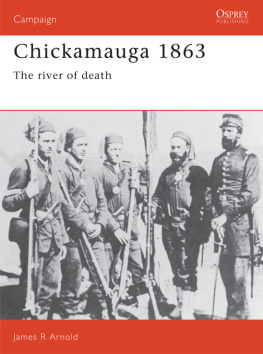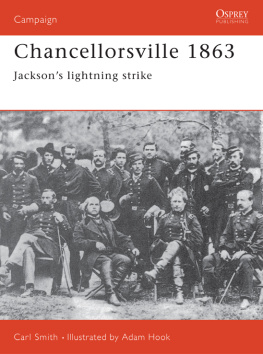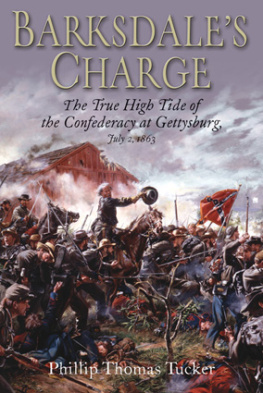Chris Mackowski, Ph.D., is a professor in the School of Journalism and Mass Communication at St. Bonaventure University in Allegany, NY. He also works as a historian with the National Park Service at Fredericksburg and Spotsylvania National Military Park, where he gives tours at four major Civil War battlefields (Fredericksburg, Chancellorsville, Wilderness, and Spotsylvania), as well as at the building where Stonewall Jackson died. Hes the author of Chancellorsville: Crossroads of Fire and The Dark, Close Wood: The Wilderness, Ellwood, and the Battle that Transformed Both, and his writing has appeared in several national magazines. He blogs regularly for Scholars and Rogues (www.scholarsandrogues.com).
Kristopher D. White is a historian for the Penn-Trafford Recreation Board and a continuing education instructor for the Community College of Allegheny County near Pittsburgh, PA. White is a graduate of Norwich University with a M.A. in Military History, as well as a graduate of California University of Pennsylvania with a B.A. in History. For five years he served as a staff military historian at Fredericksburg and Spotsylvania National Military Park, where he still volunteers his services. For a short time, he was a member of the Association of Licensed Battlefield Guides at Gettysburg. Over the past seven years, he has spoken to more than thirty roundtables and historical societies.
Chris and Kris, longtime friends, have co-authored several books together, including The Last Days of Stonewall Jackson, Chancellorsvilles Forgotten Front: The Battles of Second Fredericksburg and Salem Church, and Simply Murder: The Battle of Fredericksburg, along with monograph-length articles on the battle of Spotsylvania for Blue & Gray. Mackowski and White have also written for Civil War Times, Americas Civil War, and Hallowed Ground. They are co-founders of the blog Emerging Civil War (www.emergingcivilwar.com).
Acknowledgments
We appreciate the support of our colleagues past and present at Fredericksburg and Spotsylvania National Military Park, especially John Hennessy, Greg Mertz, Eric Mink, Don Pfanz, Janice Frye, and Noel Harrison, who all made contributions to this volume. We especially thank Frank OReilly for his editorial work, inspiration, and moreas our friend and mentor, he remains our indispensable man. We also thank Ray Castner, Joe Haydon, and Jim Good.
At St. Bonaventure Universitys Russell J. Jandoli School of Journalism and Mass Communication, we thank Denny Wilkins and John Hanchette. Thanks, too, to the former dean, Lee Coppola, whose behind-the-scenes support and encouragement made much of the first edition possible. Thanks to the current dean, Pauline Hoffmann, for continuing that support. A special wave of the arm to Patrick Vecchio for his editing and encouragement.
We offer our appreciation to Colonel Keith Gibson of the Virginia Military Institute, whose stewardship of Jackson remains stalwart and keen. Likewise, we thank Michael Anne Lynn of the Stonewall Jackson House. Both have offered years of support and assistance.

Thanks to John Cummings and the Friends of Fredericksburg Area Battlefields for supporting the publication of the first edition of this book and to Jackson Foster of The ID Entity for the handsome design work he did for same. Thanks to Theodore P. Savas and Sarah Keeney for their support of this second edition.
Finallyand most importantlywe offer our thanks to our families: to Sarah White and to Heidi Hartley and Stephanie and Jackson Mackowski.

Photo Credits:
Historical photos courtesy of
Fredericksburg and Spotsylvania National Military Park except: the postcard of the recumbent Lee statue on pg. 118, which comes from the collection of John Cummings; the photo of Little Sorrel on pg. 152, which appears courtesy of VMI; the photo of the Reverend Lacy on pg. 52, which appears courtesy of the Presbyterian Church of Fredericksburg; the portrait of Beverly Tucker Lacy (undated) by James Reeve Stuart on pg. 152, which appears courtesy of Washington and Lee University, Lexington, Virginia.
Modern photography by Chris Mackowski except: the photo of Moss Neck on pg. 57, which appears courtesy of Kathleen Logothetis; the photo of the Marshall on pg. 72, which appears courtesy of Kipp Teague; the photo of the boot monument on pg. 81, which appears courtesy of Americasroof at en.wikipedia, from Wikimedia Commons; the photo of the Jackson Monument on pg. 130, which appears courtesy of Caity Stuart.
May 11th, 1863.
General Order 61
Hdqrs. Army of Northern Virginia.
With deep grief, the commanding general announces
to the army the death of Lt. Gen. T. J. Jackson,
who expired on the 10th inst, at 3:15 PM. The daring,
skill, and energy of this great and good soldier,
by the decree of an all-wise Providence, are now lost
to us. But while we mourn his death, we feel that his
spirit still lives, and will inspire the whole army with
his indomitable courage and unshaken confidence in
God as our hope and strength. Let his name be
a watchword to his corps, who have followed him to
victory on so many fields. Let officers and soldiers
emulate his invincible determination to do everything
in the defense of our beloved country.
R. E. Lee General.


A statue of Stonewall Jackson stands over his gravesite in Lexington, Virginia.
Timeline of the Chandler Office Building
A PPENDIX A
circa 1670s: Land purchased by Thornton family.
circa 1797: Thomas Coleman Chandler born.
1798: John Thornton inherits 465-acre tract of land from his father, Colonel Anthony Thornton, whichbecomes Fairfield.
1825: Thomas Coleman Chandler marries Clementina S. Alsop.
John Thornton marries third wife, Mildred Washington Dade.
1828: Thornton constructs a small office building near his main house at Fairfield.
circa 1844: Clementina Chandler dies.
John Thornton dies, leaving Fairfield to Mildred.

